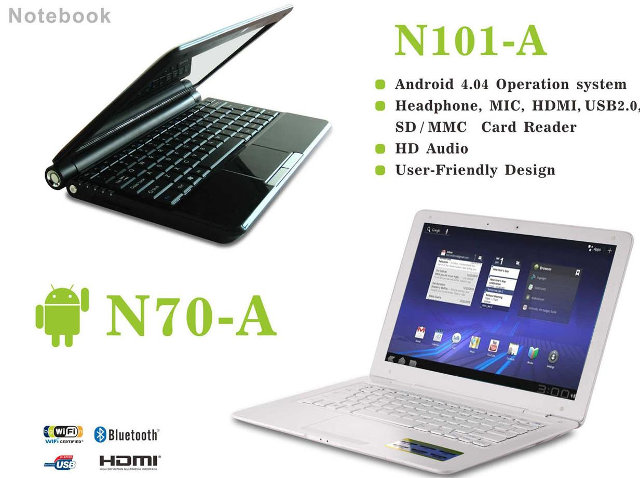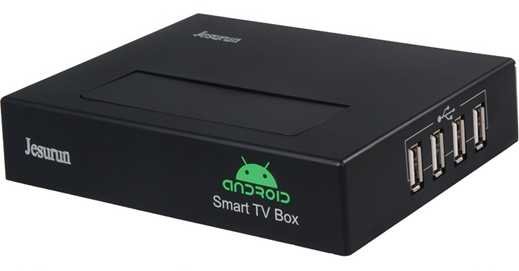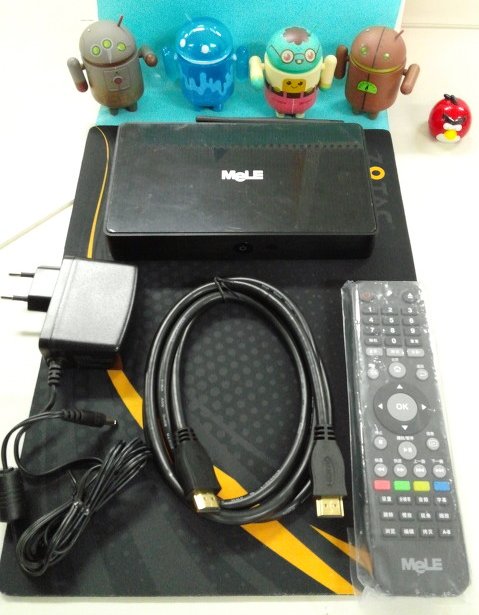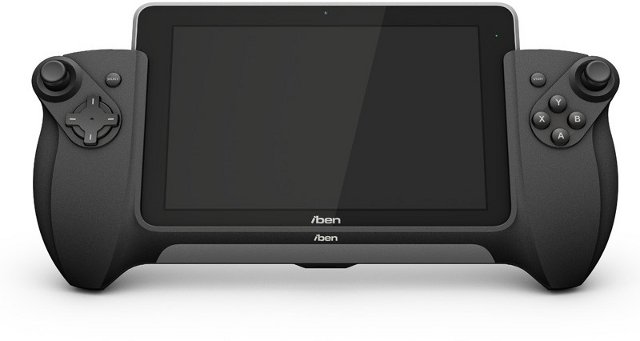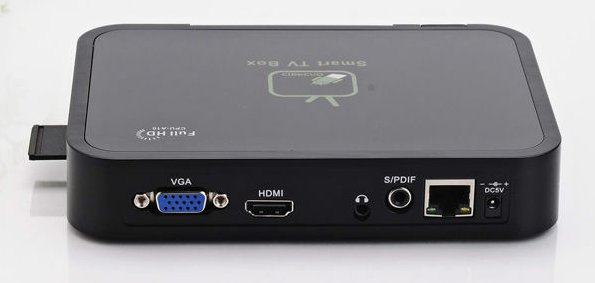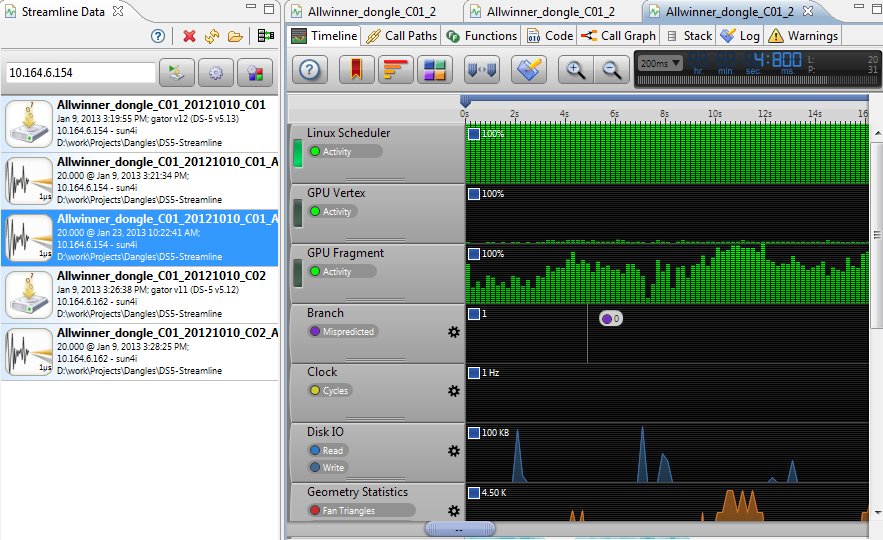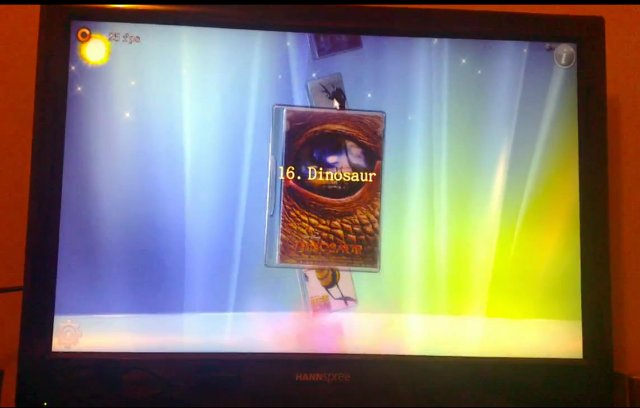Last year, H6 Android Netbook featured AllWinner A10 Cortex A8 processor, 1GB RAM, 4GB Flash, and came with a 10.1″ display with 1024×600 resolution, and people who tried did not seem very satisfied with their purchase. This year however, we should get more better hardware thanks to devices like N70-A and N70-B, respectively powered by AllWinner A20 with 1GB RAM, and AllWinner A31 with 2GB RAM, that both come with a 13.3″ display (1280×800). There’s also N101-A model powered by AllWinner A20, but it comes with a 10.1″ display with 1024×600 resolution. All models are available with 8, 16 or 32GB flash, feature Wi-Fi 802.11n and Ethernet connectivity, a 0.3MP front camera, an SD card reader, 2 USB ports, 1 HDMI output, as well as mic IN and headphone jacks. For some reasons, AllWinner A20 models runs Android 4.2.2, but AllWinner A31 still runs Android 4.1.2. You should be able […]
Jesurun A19 and Mele M5 Android STBs Powered by AllWinner A20
After Cloudsto A20 Media PC, and GV-17, we’ve now got more choices for AllWinner A20 based Android set-top boxes with Jesurun A19 and Mele M5, both featuring 1GB RAM, and running Android 4.2, with the former fitted with 4GB NAND flash and the latter 8GB. Those are ones of the few devices featuring SATA support, and optical SPDIF. Jerusun A19 also comes with VGA output. Jesurun A19 Specifications: SoC – Allwinner A20 dual core Cortex A7 up to 1.2 GHz + Mali-400 MP2 GPU System Memory – 1GB DDR3 RAM Storage – 4GB NAND Flash + SD card slot (up to 128GB) + SATA interface Video Output – HDMI up to 3840 X 2160 (UHD), VGA and AV Video Decoding – Up to 1080P@60fps Audio Output – HDMI + SPDIF (Optical) Connectivity – 10/100M Ethernet + Wi-Fi 802.11 b/g/n USB – 4x USB ports IR sensor Power Adapter – 5V/2A Weight […]
AllWinner A31 Mele Media Player Pictures, Screenshots and Antutu Benchmark
Mele A1000G Quad is an Android set-top box featuring AllWinner A31 quad core Cortex A7 processor with 2GB RAM and 8GB Flash. You can check the full specifications in my previous post. Eddy Lab got hold of an engineering sample with a similar model but without SATA that looks like A3700 [Update: Model name is apparently G39A04], and he, or they, took a few pictures, and tested the device (Link in Korean). I’ll re-post some of their unboxing pictures, and share some of their screenshots and benchmarks in this post. The device comes with a 5V/2.4A power adapter, an HDMI cable, and an IR remote. The device features an Audio out jack, a micro USB socket, a power jack, and HDMI connector, an RJ45 Ethernet connectors, 3x USB host ports, SPDIF output (Optical), and an SD card slot. It’s very similar to the original Mele A1000 except VGA and AV […]
iben Gamepad Android Game Consoles Powered by AllWinner SoCs
Earlier this month, AllWinner exhibited many devices from their customers at the Hong Kong Fair, including an Android game console called iben GamePad. There are now more details about this gaming device, one of them being there are three models: Game Pad L1-B – Based on AllWinner A20 – $110 per unit for 500 pieces order. Available in May. Game Pad L1-C – Based on AllWinner A31 – $150 per unit for 500 pieces order. Available in May. Transformer Game Pad L2 – Same as L1-C except the actual gamepad is detachable, so you can just use it as a normal tablet when you don’t play. Available in June. Game Pad L1-C / L2 Specifications: SoC – AllWinner A31 Quad-Core ARM Cortex A7 CPU + PowerVR SGX544MP2 GPU System Memory – 2GB RAM Storage – 16GB flash + microSD slot Display – 7″ touch screen (5pts), IPS display. Resolution: 1280×800 […]
GV-17 Android 4.2 Set-Top Box Features Allwinner A20 SoC, a 2.0MP Webcam
After Clousto A20 Media PC, and Mele A100 Dual, here’s another set-top box powered by AllWinner A20 dual core Cortex A7 SoC. GV-17 Android TV Box comes with 1GB RAM, 8GB Flash, and contrary to the other previous hardware also adds 2.0MP front camera. If you’ve heard about this model before, it’s because it’s an update of GV-17 set-top box based on AllWinner A10. GV-17 (A20) Specifications: SoC – AllWinner A20 dual core Cortex A7 + Mali-400MP2 GPU System Memory – 1GB RAM Storage – 8G NAND Flash + SD card slot Video Output – HDMI, composite and VGA Audio I/O – HDMI, stereo jack, and S/PDIF – Integrated MIC Video Codecs – MPEG-1/2,MPEG-4 ASP, DivX 3/4/5, H.263, H.264, XviD, VC-1, WMV Audio Codecs – MP3, WMA, WAV, OGG, FLAC, ALAC, APE, ACC-LC, ACC-HE, AC-3, DTS, Real Audio Connectivity: WiFi 802.11b/g/n (RALINK 8188) 10/100M Ethernet USB – 2x USB Host […]
Using ARM Development Studio 5 (DS-5) Streamline with MK802II mini PC
MK802-II is an Android 4.0 mini PC powered by AllWinner A10 (ARM Cortex A8) with 1GB RAM and 4GB flash. Instructions are also available to run Ubuntu, or other Linux distributions. ARM Development Studio 5 (ARM DS-5) is software development tool suite for ARM processors that can be used for both Linux and Android debugging, and available in 2 versions: professional edition and community edition, the latter being free of charge. I’m writing about both today, because Bob Peng, Technical Marking Engineer for ARM China, recently wrote a blog post in Chinese [Update: An English version is now available] showing how to use MK802-II, preloaded with the required drivers and daemon, with DS-5 Streamline Performance Analyzer with is part of both versions. The community edition may be missing some features of Streamline however. Streamline Performance Analyzer allows you to: Find out which modules or functions to take up most of […]
Booting Linux in Less Than 1 Second in AllWinner A10 Devices? Yes! You Can!
threewater, a Chinese developer, has just posted a very interesting demo on linux-sunxi mailing list showing a device based on AllWinner A10 boot linux within 0.85s, and if you add a Qt app, the total time is just about 1.2s. This appears to be a custom hardware (EM6000), but we do know it’s based on AllWinner A10, comes with 512 MB RAM, and 4GB NAND Flash. On the software side, the device runs kernel 3.4 from linux-sunxi, with a customized version of uboot, a squashfs rootfs, and a Qt 4.7.4 app showing a gauge. Both the rootfs (7MB) and the kernel (2MB) have been compressed with LZO. All that boots from NAND flash for optimal speed. The 1.2 second time includes kernel + rootfs + app time, and the total time is a bit longer, but this is still impressive. Here’s the boot log:
|
1 2 3 4 5 6 7 8 9 10 |
[1.690000 1.690000] U-Boot SPL 2013.01-05984-g2120a27-dirty (Apr 17 2013 - 14:22:02) [0.009000 0.009000] Board: EM6000 [0.012000 0.003000] DRAM: 512MB [1.014000 1.002000] init startup v1.1 [1.016000 0.002000] mount usr data error 2 [1.158000 0.142000] Could not read calibration: "/data/etc/pointercal" [1.166000 0.008000] Couldnt open tslib config file: No such file or directory [1.175000 0.009000] QWSTslibMouseHandlerPrivate: ts_config() failed with error: 'No such file or directory' [1.187000 0.012000] Please check your tslib installation! [1.200000 0.013000] qt show |
If you just boot to […]
How to Use Libhybris and Android GPU Libraries with Mer (Linux) on the Cubieboard
You may have heard about libhybris, a library that cleverly loads Android HW adaptations and convert calls from bionic to glibc. One of the greatest achievement of this library is to allow Android GPU drivers to be used with Linux, and is notably used by Canonical, although they did not write it, for Ubuntu 14.04 which will be compatible with any recent Android smartphones or tablets. One way to get started with libhybris is to port a device to Ubuntu Touch, but this may take a while. However, I’ve found a faster and easier way to play with libhybris thanks to Martin Brook (vgrade) who wrote a tutorial on how to use libhybris with Mer on the Cubieboard. Mer is an open source mobile Linux distribution powered by Qt/QML and HTML5, that’s born from the ashes of Meego, and is now used in the upcoming Sailfish OS. You’ll need to […]


